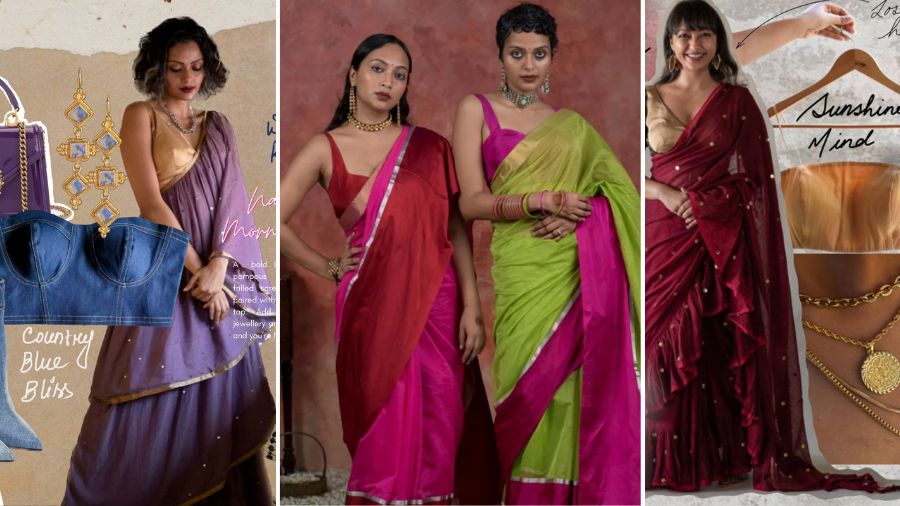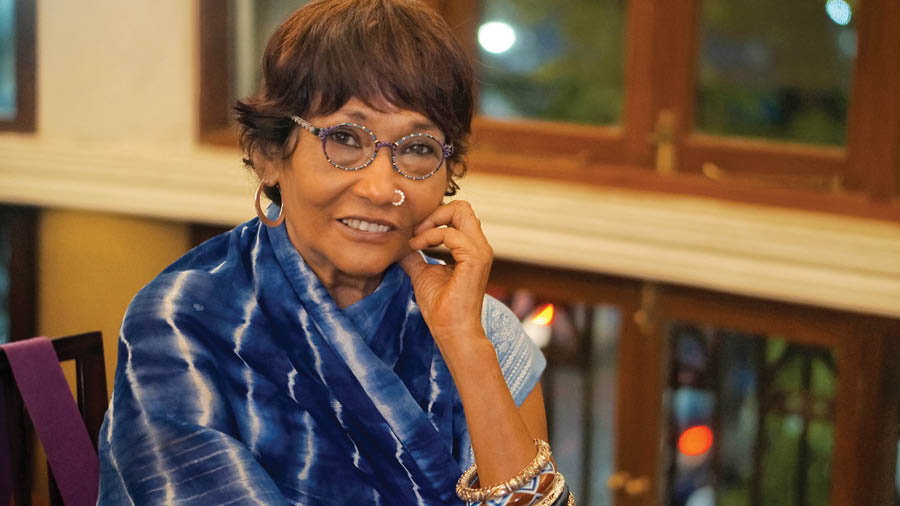The festive season feels slightly incomplete without a sari. With so many options — handloom cotton, tussar, matka, silk, Jamdani, tant, Paithani, Bishnupuri — sari lovers are spoilt for choice. But when it comes to draping, the fashionista within often craves variety. Enter the My Kolkata handbook of sari draping styles to make your festive lookbook snazzier and more diverse than ever.
Going with the tradition
For Bengalis, there are three broad ways to wear a sari traditionally — the regular style, the aatpourey drape and another traditional style, where the pallu comes to the front. The key to these draping styles lies in how you play with the pallu and the kunchi (pleats).
In regular draping, the focus is on simplicity. This is the most widely adopted method of sari draping. The pallu or anchal rests on the left shoulder, while the kunchi sits neatly centred. You can either leave the pallu open or pleat it, securing it with a safety pin for a polished look.
The aatpourey style of wearing a sari is popular in West Bengal, especially on festive days. It was once the most common draping style. In this method, the sari is draped with the pleats at the front and then wrapped around the waist. The other end of the pallu is placed on the right shoulder, often secured with keychains. The kunchi is not present, as many women prefer to drape the sari around the waist without it.
The pallu at the front is perfect for saris with intricate designs, offering the best way to showcase these details. The draping technique is quite similar to the regular style —except here, the pallu is not turned over the left shoulder, flowing at the back. Instead, it is brought over the right shoulder and tucked into the left side of the waist.
Other traditional ways of wearing a sari are nauvari style popular in Maharashtra, surguja draping style of Chhattisgarh, bootheyara style from Karnataka and kunbi draping style from Goa, to name a few.
Contemporary style check
When it comes to the contemporary ways of draping a sari, there is an iconic retro style look. Veteran Bollywood actress Mumtaz was not only popular for her acting chops, but also for her iconic way of wearing a sari. The USP of this style is the layered drape at the front, the pleated pallu and a tightly wrapped sari that gives a sleek look. Add a buffon and winged liners, and you are ready to twist on Aaj Kal Tere Mere Pyar Ke Charche...
Another draping style particularly loved by youngsters is the lehenga-sari fusion. This style uses two drapes. The first drape is pleated around the waist to form a layer over the underskirt. The full-length sari is then wrapped over the skirt, with the pallu wrapped around the waist and tucked in. The flowing skirt adds a dramatic flair. You can choose to pleat the pallu or leave it open, and experiment with the blouse design — from traditional styles to something with a dash of oomph.
Fusion funk
Pant saris and dhoti saris are a huge hit among fashionistas who love adding some funk to their style game. Pant saris offer a ramp-ready finish, with the drape of the sari attached to the pants, making them ready to wear. Dhoti saris are a perfect fusion of two traditional outfits. For divas who struggle with managing the kunchi, these styles are a game-changer, making movement smoother.
Sari worn with a belt or with a cape are both cool additions that amp up the look. Wearing the pallu around the neck or adding a dupatta on the right shoulder — the fusion options are endless.


